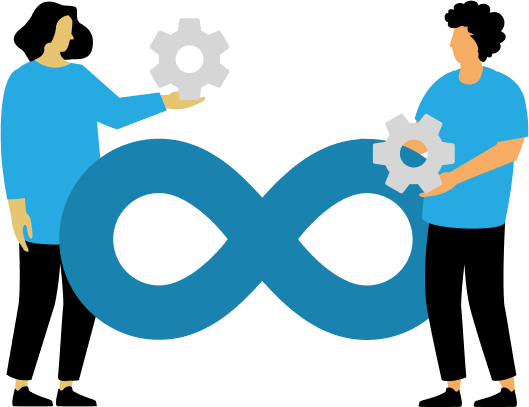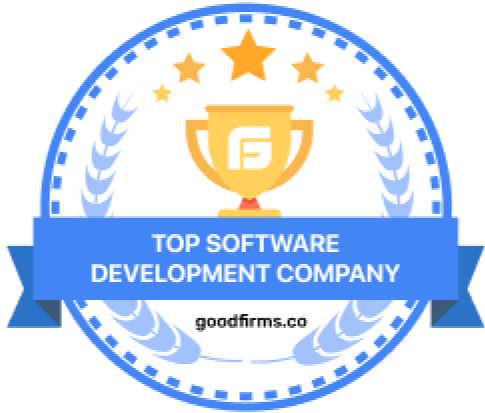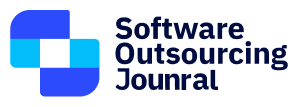When confronted with preparing ingredients (mise en place), it becomes evident that sharpening the knife beforehand greatly facilitates the process instead of struggling with a dull blade. Hence, professional individuals often prioritize identifying the most suitable project management tactic before commencing work.
The preferred method involves adopting a “waterfall” style, where tasks are sequentially arranged for progression. However, in situations where projects prove to be more intricate due to factors such as involving multiple team members, inter-team collaboration, or complexities inherent in certain industries, the linear progression of the waterfall model may become overwhelming.
In such scenarios, an Agile approach emerges as a more adaptable solution. Although some may erroneously view Agile as a distinct entity in contrast to methodologies like Scrum and Kanban, it essentially serves as an overarching framework encompassing these methodologies. Below is a breakdown of these three terms.
In this blog, we will learn briefly about Agile Project Management along with the distinction between Scrum vs Kanban approaches for project management.
What is agile project management?
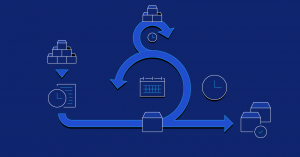
Agile project management denotes the application of the broader Agile methodology to enhance workflow responsiveness. Within an agile framework, project managers streamline intricate objectives into distinct task groups, allowing teams to address them in sequences tailored to their capabilities, which may not necessarily follow a linear path. Agile projects prioritize fluidity and adaptability over rigid prescription.
Industries characterized by multifaceted projects and considerable uncertainties, such as product and software development, commonly adopt agile methodologies.
Scrum and Kanban, often associated with agile practices, serve distinct purposes:
- Agile represents a philosophical approach to project management.
- Kanban facilitates task organization within projects.
- Scrum provides an organizational structure.
While it’s feasible to integrate all three methodologies simultaneously without conflict, each can also be implemented individually based on project priorities.
What is Agile methodology?
As a proper noun, “Agile” denotes the original agile management framework, from which various agile methodologies have evolved. Conceived by conference planners in 2001 to address the needs of the burgeoning software development industry, the Agile manifesto outlines its core principles as:
- Prioritizing individuals and interactions over processes and tools
- Valuing working software over comprehensive documentation
- Emphasizing customer collaboration over contract negotiation
- Favoring responsiveness to change over adherence to a rigid plan
Agile methodology diverges significantly from the traditional waterfall approach, which relies on a linear task sequence. Instead, Agile breaks down tasks into smaller project components that collectively contribute to the overarching project goal, rather than triggering subsequent steps linearly.
This approach enables task segmentation, allowing team members to meet individual deadlines and adapt as necessary.
The Advantages of Agile Management
Agile management offers several benefits that contribute to its popularity in modern project management:
- Faster Delivery Times: Agile methodologies prioritize iterative development and frequent releases, allowing teams to deliver value to customers more rapidly than traditional approaches.
- Enhanced Collaboration: Agile frameworks promote close collaboration among team members, stakeholders, and customers throughout the project lifecycle. This collaboration fosters shared understanding, improves communication, and enables quick decision-making.
- Continuous Integration of Customer Feedback: Agile methods emphasize customer-centricity, encouraging teams to incorporate customer feedback early and often. Agile teams can adapt their product to meet evolving customer needs and preferences by regularly soliciting feedback.
- Adaptability to Market Changes: Agile methodologies enable teams to respond quickly to changing market conditions, emerging technologies, and evolving business requirements. By embracing change as a natural part of the development process, Agile teams can stay ahead of competitors and deliver products that better meet market demands.
However, Agile projects may face challenges such as scope creep, where project requirements expand beyond initial expectations. This emphasizes the importance of effective project management and prioritization to maintain project focus and prevent unnecessary additions.
Ideal Applications of Agile Methodology:
Agile methodologies are particularly well-suited for:
- Organizing Projects with Many Separate Parts: Agile’s iterative approach allows teams to break down complex projects into smaller, more manageable components, prioritizing tasks and allocating resources more easily.
- Applying Changes to Projects as They Move Down the Pipeline: Agile frameworks accommodate change by providing flexibility and adaptability throughout the project lifecycle. This enables teams to adjust priorities, refine requirements, and incorporate feedback in real-time.
- Helping Teams Collaborate Effectively: Agile methodologies promote collaboration through cross-functional teams, regular meetings, and transparent communication channels. This collaborative environment fosters creativity, innovation, and collective ownership of project outcomes.
What is Kanban?

Kanban is a visual project management method that originated in manufacturing but has since been adopted by various industries, including software development.
Key aspects of Kanban include:
- Visualizing Project Status and Progress: Kanban boards visually represent work items and their current status. By organizing tasks into columns representing different stages of completion, teams gain insights into workflow efficiency and potential bottlenecks.
- Limiting Work in Progress (WIP): Kanban encourages teams to set limits on the number of tasks in progress at any given time. This prevents overloading team members and promotes a steady workflow through the system.
- Prioritizing Tasks: Kanban boards allow teams to prioritize tasks based on urgency, importance, or customer value. This helps teams focus on delivering high-priority items while maintaining a balanced workload.
- Continuous Improvement (Kaizen): Kanban promotes a culture of continuous improvement by encouraging teams to reflect on their processes, identify areas for optimization, and implement changes incrementally.
What is Scrum?
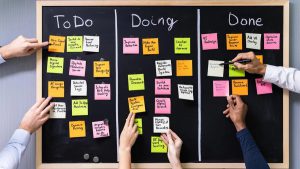
Scrum is a framework for Agile project management that emphasizes iterative development, collaboration, and flexibility. Key components of Scrum include:
- Defined Roles and Responsibilities: Scrum defines specific roles, such as the Scrum Master, Product Owner, and Development Team, each with distinct responsibilities to ensure clear accountability and effective collaboration.
- Time-Boxed Iterative Development: Scrum divides the project into short, fixed-duration iterations called sprints, typically lasting two to four weeks. During each sprint, the team delivers a potentially shippable product increment, allowing for frequent feedback and adaptation.
- Regular Inspections and Adaptations: Scrum encourages regular inspection and adaptation through events such as the Daily Standup, Sprint Review, and Sprint Retrospective. These events provide opportunities for the team to review progress, gather feedback, and make adjustments as needed.
- Empirical Process Control: Scrum is based on empirical process control, emphasizing transparency, inspection, and adaptation. Scrum teams can continuously improve their processes and outcomes by regularly inspecting progress and adapting based on feedback.
Why Consider Scrum and Kanban?
In various realms, from personal tasks to corporate endeavors, the utilization of Scrum and Kanban methodologies presents invaluable benefits.
As per the State of Scrum Report, 97% of respondents incorporate Scrum into their agile practices. Scrum methodology offers a dynamic solution for teams seeking to adapt to unforeseen circumstances, fostering agility and responsiveness swiftly.
Moreover, Scrum promotes structured work management, enhancing team efficiency and organization. Embracing Scrum methodologies can imbue teams with increased adaptability and effectiveness.
Conversely, Kanban methodology facilitates gradual, incremental changes to existing workflows, facilitating the gradual enhancement of product or service delivery. By enabling rapid feedback loops, Kanban empowers teams to implement their offerings’ adjustments promptly.
Now equipped with foundational knowledge regarding Scrum and Kanban, let’s explore their fundamental differences.
Scrum vs Kanban
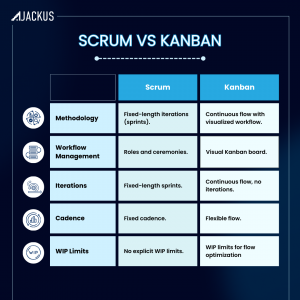
Let’s understand the difference between Scrum and Kanban methodologies.
Distinguishing Between The Process
In the Scrum framework, teams operate in sprints to monitor progress, facilitating adaptability and transparency. Key components of the Scrum process include:
- Sprint: These fixed-length events enable teams to convert ideas into tangible value, fostering consistency and iterative development.
- Sprint Planning: A collaborative session determining the sprint’s objectives and actionable tasks.
- Daily Scrum: Daily meetings to inspect progress and adapt plans as necessary, promoting alignment and agility.
- Sprint Review: A review session will be held to assess the sprint’s outcomes and adjust the product backlog accordingly.
- Sprint Retrospective: Reflective sessions to evaluate team performance and identify areas for improvement.
Typically, Kanban embodies six core principles or work processes, including:
- Visualizing Workflow: By visually representing the current status of work, teams gain insights into overall progress.
- Limiting Work in Progress: Encouraging completion of ongoing tasks before commencing new ones fosters workflow efficiency.
- Managing Workflow: Kanban focuses on optimizing workflow to expedite task completion.
- Establishing Explicit Process Policies: Clarity regarding rules and guidelines promotes collaborative work.
- Implementing Feedback Loops: Regular feedback sessions enable teams to share progress and align objectives.
- Continuous Improvement: Encouraging ongoing refinement through experimentation enhances overall effectiveness.
Understanding Cadence Differences
Kanban embodies a continuous workflow structure, allowing teams to adapt to evolving priorities. Work items are visually represented on a Kanban board, progressing through various stages to completion. Conversely, Scrum operates within short, defined timeframes, facilitating the breakdown of complex tasks into manageable segments.
Mastering the Different Roles
Kanban has no designated product owner or Scrum master; instead, the entire team collectively owns the Kanban board. Conversely, Scrum entails distinct roles, including the product owner, Scrum master, and developers, each contributing to sprint success.
Key Metrics
In both Scrum and Kanban, key performance indicators (KPIs) play a vital role in assessing workflow efficiency and project effectiveness. Metrics such as lead time, cycle time, velocity, and customer satisfaction provide valuable insights into team performance and process optimization.
Tracking and analyzing these metrics empower teams to make data-driven decisions and continuously improve their practices.
While both Scrum and Kanban offer unique benefits and approaches to project management, understanding their nuances and applying them judiciously can significantly enhance team productivity, collaboration, and success.
Scrum vs Agile
Scrum is often considered a subset of Agile methodology, serving as a specific implementation within the broader Agile philosophy. While both Scrum and Agile emphasize adaptability and responsiveness to change, they differ in their level of prescription and granularity.
Agile, as a philosophy, emphasizes principles such as iterative development, customer collaboration, and responding to change over following a plan. It provides a guiding framework for project management that encourages flexibility and continuous improvement.
Scrum, on the other hand, is a more structured approach that prescribes specific roles, events, and artifacts. It defines roles like the Scrum Master, Product Owner, and Development Team, and employs time-boxed iterations called sprints, during which teams deliver increments of the product. Scrum provides a more concrete framework for implementing Agile principles, offering clear guidelines for project organization and execution.
Applying Agile Methodology: Scrum vs Kanban

Scrum and Kanban are both Agile methodologies that can complement each other in project management practices. While they have distinct characteristics, they share common goals of promoting flexibility, collaboration, and continuous improvement.
Kanban primarily focuses on visualizing workflow and limiting work in progress to optimize efficiency and flow. For example, Kanban boards visually represent tasks and their status, allowing teams to track progress and identify bottlenecks. Kanban is well-suited for managing tasks with variable priorities and fluctuating workloads.
Scrum, on the other hand, is centered around time-boxed iterations and cross-functional teams working towards a common goal. Scrum emphasizes iterative development, regular inspection, and adaptation, focusing on delivering customer value in short cycles. Also, Scrum provides a structured framework for project planning, execution, and review.
In practice, Kanban boards can be used within Scrum teams to visualize tasks within sprints or to manage the product backlog. By combining elements of both methodologies, teams can leverage the strengths of each approach to improve project management practices and outcomes.
Agile vs Waterfall
Agile and waterfall represent two contrasting approaches to project management, each with advantages and limitations.
Waterfall follows a sequential, linear process where each phase of the project (e.g., requirements gathering, design, development, testing) is completed before moving on to the next phase. This rigid structure provides clarity and predictability but lacks the flexibility to accommodate changes or feedback during the project lifecycle.
Agile, in contrast, embraces change and uncertainty, allowing for iterative development and continuous adaptation. Frequent releases, stakeholder collaboration, and responsiveness to evolving requirements characterize agile projects.
Agile methodologies prioritize customer value and aim to deliver working software incrementally, enabling teams to respond quickly to feedback and market changes.
The choice between Agile and waterfall depends on factors such as project complexity, predictability of requirements, and stakeholder engagement. Agile is well-suited for projects with evolving or unclear requirements, where flexibility and responsiveness are essential.
Waterfall may be more appropriate for projects with well-defined requirements and stable environments, where a sequential approach can provide clarity and control.
Ultimately, selecting a project management methodology should align with the organization’s goals, project characteristics, and stakeholders’ needs. It’s not a binary choice between Agile and waterfall but rather a spectrum of approaches that can be tailored to meet specific project requirements.
Conclusion: Scrum vs Kanban
When deciding between Kanban, Scrum, or other methodologies, teams should consider project complexity, team composition, organizational culture, and customer requirements. It’s essential to select a methodology that aligns with the project’s objectives and constraints while providing the flexibility and adaptability needed to succeed in today’s dynamic business environment.
Additionally, combining elements of different methodologies or adopting hybrid approaches can help teams leverage each methodology’s strengths while mitigating their weaknesses.
Ultimately, the goal is to choose a methodology that empowers teams to deliver customer value efficiently and effectively.
Want to build your teams and execute projects based on your preferred methodology? Book a call.

Start a Project with Ajackus













































